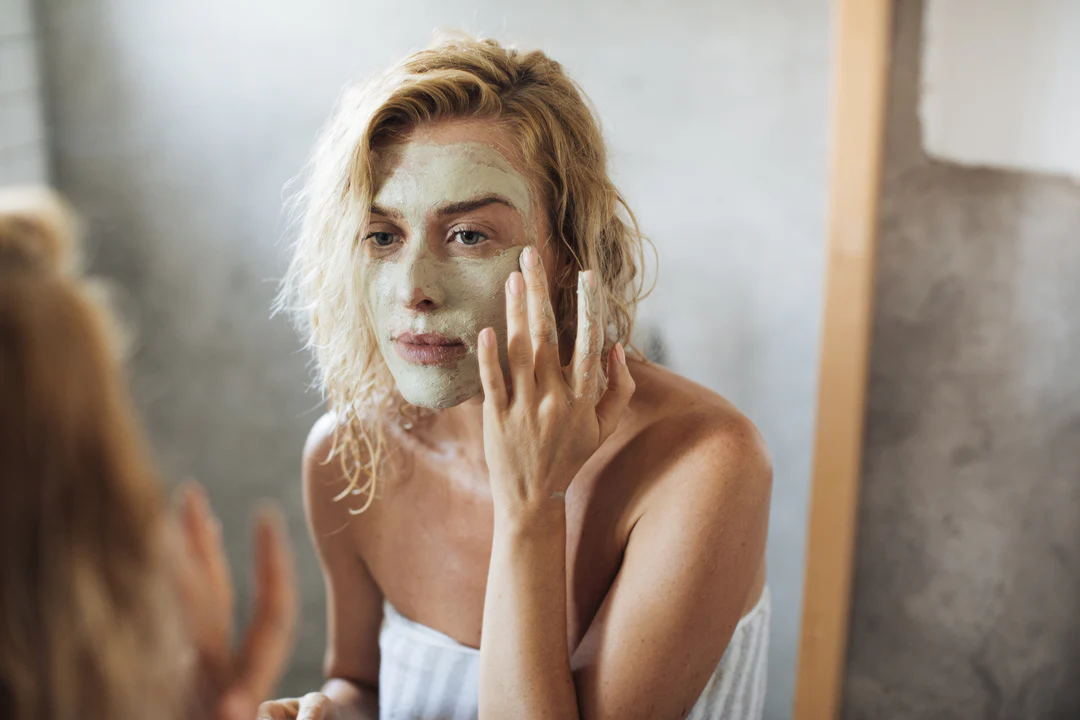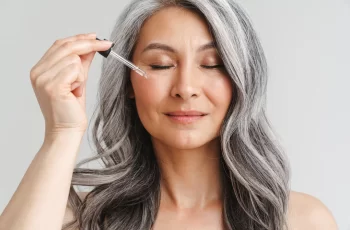
Can I use Lactic Acid After Salicylic Acid Mask?
The word “acid” will no doubt spark some concern in mind, no matter how knowledgeable you are when it comes to skincare. So, when it comes to mixing, layering, and using these acids together it can feel a little daunting, especially when it comes figuring out the best order of applying various skincare products.
So, with that in mind let’s find out together whether you can use lactic acid after salicylic acid mask?
Can I use salicylic acid and lactic acid together?
Yes, it is considered safe to use salicylic acid and lactic acid together because they work on different areas of the skin and can target various skin concerns, therefore not causing irritation or allergic reaction. Both ingredients are chemical exfoliants and are highly effective at delivering various skin results. Luckily for us, due to the different molecular size you can use salicylic acid and lactic acid together. Lactic acid is a considered the gentlest of the chemical exfoliant family known as Alpha Hydroxy Acids (AHAs) this is because the molecular size is very large meaning it is unable to penetrate too far into the skin. Salicylic acid on the other hand has a smaller molecular size and is also oil-soluble meaning it is able reach the lower layers and able to clear out the pores of excess sebum, dirt, bacteria, and build-up of other impurities.
If you are wanting to find out more about both acids, you can find more over on The Beauty Insiders blog.
What is Salicylic Acid?
What is Lactic Acid?
What should I use after salicylic acid mask?
Understanding the best order to apply skincare products will ensure you are getting the best out of the high performing formulas enriched in active ingredients.
It may feel as though using a face mask at the end of your skincare routine would lead to optimal skin results. The truth is, you’d want to apply a face mask, especially if it contains salicylic acid after cleansing the skin before the further steps of your routine.
Here is an example of an evening skincare routine that can be adapted to suit you.
Evening Skincare Routine
Cleanser – Remove any traces of makeup and layer of the day’s impurities. For an evening routine you can also perform a double cleanse to ensure the skin is deeply cleansed. Don’t forget to team your cleanser with a flannel for optimal results.
Face Mask (optimal) – Face masks should be applied to cleansed skin in between the other steps of your skincare routine. It is usually considered best to use a face mask once or twice a week.
Toner – This step can be missed out if you have already used a face mask containing high percentages of salicylic acid. Opt for a toner enriched with PHA or lactic acid to avoid skin irritation.
Serum – Something packed with hyaluronic acid or another hydrating active ingredient will give the skin an added boost in hydration.
Oil – This is another optimal step if you are wanting to supercharge your skin overnight. Choose a formula packed with botanical extracts to nourish and replenish the skin.
Moisturiser – Lock all the goodness of the previous steps in place with a layer of moisturiser, by morning your skin will appear revived, rejuvenated, and restored.
What can you not mix with salicylic acid?
Avoid using retinol and salicylic acid as this can often lead to the skin suffering from intense dryness and discomfort.
If you are wanting to find out more check out our blog post about “What can you not mix with salicylic acid”
Which is stronger salicylic acid or lactic acid?
Out of the two acids, it is considered that salicylic acid is stronger and is most beneficial for those with a combination, oily or blemish-prone skin type. What you will find is that salicylic acid one of the most used BHAs and is often found in potent skincare formulations used to help combat blemishes, spots, and acne. With the fact it is related to aspirin salicylic acid contains anti-inflammatory properties as well as providing exfoliation to the outer surface of the skin. The build-up of dead skin cells, impurities, and bacteria the skin is clear and fresh whilst salicylic acid can also make its way into the lower layers and unclog the pores.
As for lactic acid, this is an AHA known for being gentle and is a favourite chemical exfoliant for those prone to dryness and mild sensitivity. This is because, as I have already mentioned, the molecular size of lactic acid is very large meaning it is only able to work on the outer surface of the skin. Because of this, skin irritation is very uncommon, however, it is still important for you to perform a patch test for 24 hours before applying it all over the face.
Does moisturiser go before salicylic acid? You’ll find that salicylic acid is formulated into various skincare products, from face wash, serums, and oils. This results in salicylic acid being applied to the skin before a moisturiser, but if you are still having trouble just remember the best order to use your skincare products is by starting with the thinnest consistency to the thickest. This will ensure the active ingredients and formulas are able to deliver results without encountering physical barriers of thick product textures. How often use salicylic acid mask? Because the percentage of salicylic acid in a face mask is generally quite high, its best to only use one once or twice a week when needed. By over-using formulas that contain potent levels of salicylic acid you will find the skin becomes dry, tight, and uncomfortable. You may also find that the skin barrier becomes stripped of sebum (natural oil found in the skin) which will result in the skin creating an overproduction which over time will result in a breakout of spots and flare-up in acne. So, there you have it, hopefully I have answered some questions you have about using lactic acid after salicylic acid mask. Don’t forget if you have any questions, or skin is your thing come and follow us on Instagram.
DQH Can I use salicylic acid first and then vitamin C?
It’s easy to create a skincare routine, but knowing how to use it is another thing entirely. In most cases, if you’re not getting the desired skin results, it could be due to the layering of conflicting ingredients. So, is it possible that salicylic acid and vitamin C are such ingredients? Or are these active ingredients the duo that’s been missing from your skincare routine? If you want answers, stick around because today we are going to explain the benefits of salicylic acid and vitamin C and how they can be used in your daily life.
What are the benefits of salicylic acid for skin?
Salicylic acid is one of the most commonly used beta hydroxy acids and is favored by many people with oily, acne-prone skin. This acid is derived from willow bark, and unlike its water-soluble relatives (called alpha-hydroxy acids), salicylic acid is oil-soluble, which means it can penetrate deeper into the lower layers of the skin. Once it reaches the lower layers, it can help unclog pores of excess sebum, dirt, bacteria, debris, and impurities. This results in clearer skin tones and greater definition.
Not only does salicylic acid benefit the underlying layers, but the outer surface of the skin benefits as well. When applied to the skin, salicylic acid removes the buildup of dead skin cells. This is accomplished by breaking the bonds that hold dead cells to the surface. Over time, this can cause the complexion to look dull and prone to acne, blackheads, and other blemishes.
If you’d like to learn more about salicylic acid and how it can improve your skin, check out this dedicated blog post from a beauty insider.
What are the benefits of vitamin C for skin?
Vitamin C is considered one of the most powerful antioxidants, which means it is very effective at fighting free radicals and preventing them from causing further skin damage. Examples of free radicals include pollution, central heating, UV rays and harsh climate. They attack proteins, fats and cell membranes as soon as they come into contact with the skin, causing signs of premature aging such as fine lines and wrinkles as well as hyperpigmentation, flaky patches of skin and loss of elasticity.
Many people usually prefer to use vitamin C in their morning routine as this ingredient gives the complexion a radiant glow. You’ll also find that vitamin C can target areas of hyperpigmentation, plumping the skin and reducing the appearance of fine lines and wrinkles.
The thing about vitamin C is that there are a lot of outdated studies going back to the 1950s that describe vitamin C as an unstable skin component. Thanks to improvements in modern technology, this is no longer the case as all products now contain a stable form of vitamin C.
Visit The Beauty Insider to learn more about vitamin C. So please check out our blog post.
Can I use salicylic acid first and then vitamin C?
Yes, you absolutely can. In fact, it’s thought that using salicylic acid before using vitamin C ensures it penetrates faster and works faster.
This is an efficient way to utilize two power sources, and the reason has to do with pH. For example, the skin’s natural pH is about 4.7, making it slightly acidic. Salicylic acid and vitamin C are also both acidic, and you’ll find that vitamin C is absorbed quickly into the skin. Therefore, using salicylic acid beforehand can increase the acidity of the skin and allow vitamin C to penetrate into the skin faster.
While this is considered an effective way to combine two powerful ingredients, you need to be aware of your skin type and how it reacts to certain active ingredients. Even people with perfect, normal skin can experience skin sensitivity and irritation. Therefore, always consult a doctor or dermatologist before using any new products on your skin.
It’s also important to follow skin application rules. In this case, you need to use the product correctly to ensure you get the best results for your skin. If you’re not sure what I mean, the basic rule for skin is to start with the thinnest consistency and work your way up to the thickest consistency. This prevents a barrier from forming on the surface, preventing other active ingredients from penetrating the skin.
Can I use salicylic acid at night and vitamin C in the morning?
Yes, absolutely, this is considered the most effective way to get returns without any adverse side effects. This is because there is enough time between applications to ensure that the skin’s pH levels return to balance.
You’ll also find that Vitamin C is rich in antioxidants and is perfect for use in the morning to ensure your skin is protected and looking its healthiest. Due to the small size of salicylic acid molecules, it is an acid that is able to reach the deepest parts of the skin. While this is effective at keeping skin clear, it also increases the risk of irritation and photosensitivity. Therefore, many people prefer to use powerful BHAs in their evening routine without exposure to UV rays, pollution, or harsh weather.
Warning: If you avoid using sunscreen every day, none of these ingredients will do what your skin needs. The combination of chemical peels and powerful ingredients increases the risk of further damage to the skin’s surface. Use SPF 50 every day to keep your skin protected and your lipid barrier healthy, even on cloudy days, keeping your skin in top condition.


